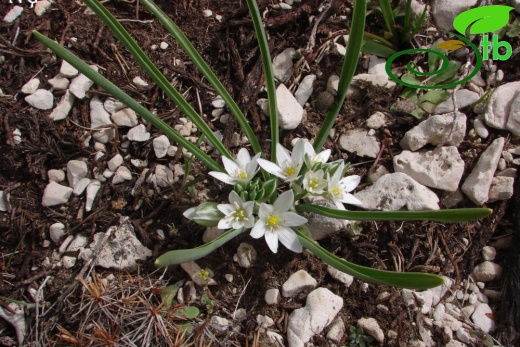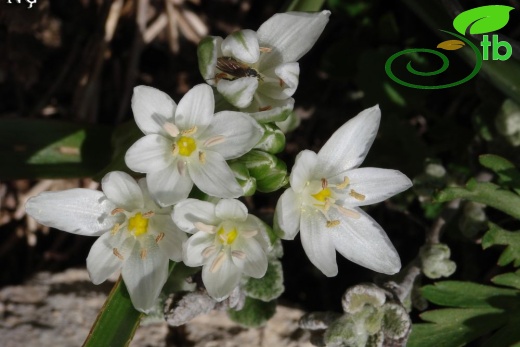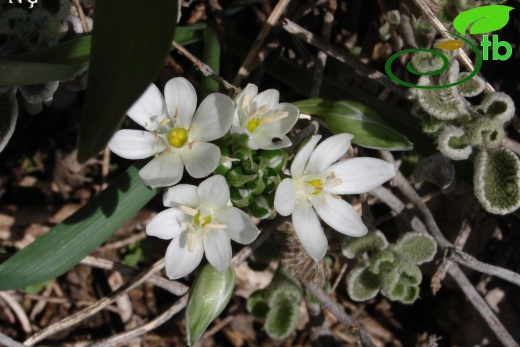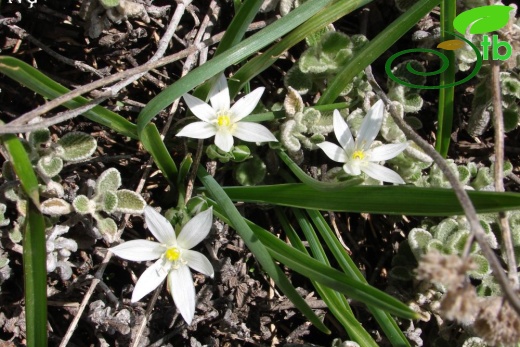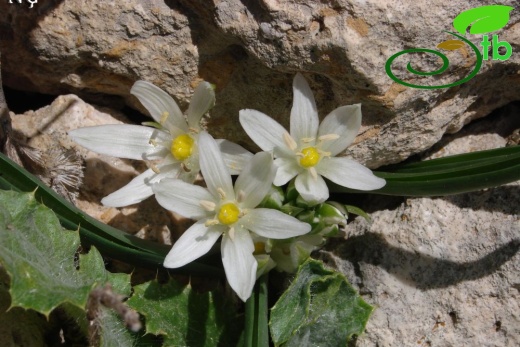Ornithogalum brevipedicellatum
Ornithogalum brevipedicellatum
Geophyte, 5–10 cm high; bulb 1.3–1.8 × 1.3– 1.8 cm, ovoid-spherical, without bulblets; outer tunics cream to pale-brown. Leaf synanthous, 4–6, 9–37 × 2.3–0.5 cm, linear-lanceolate, canaliculate, with a whitish median line, gradually narrowing towards the base, longer than scape, margins entire, glabrous. Scape below the ground level, 3–12 cm, slender. Inflorescence congested racemose, racem borne at ground level, dense, 2–6 × 3–4.5 cm, erect, with 5–15 fl owers. Bracts lanceolate, long acuminate, 15–23 × 3–5 mm, membranous, longer than pedicels. Flowers sessile or subpedicellate up to 3 mm at anthesis and fruiting period. Tepals elliptic to ovate-elliptic, obtuse to acute at apex; outers 12–18 × 4–5 mm; inners 13–18 × 4.5–5 mm, white inside, green with narrowly white margins outside. Filaments white, conspicuously tapering towards the apex, 4–6 × 1–2 mm; anthers medifixed, milky white, 2–2.2 mm length. Ovary ovoid, 3.5–5 × 2–3.5 mm, pale green, longer than style; style 1.5–2 mm length; stigma capitate. Capsule 10–15 × 10–15 mm, ovoid, erect, distinctly winged, pale brown. Seeds numerous, 1.8–2 × 1.2–1.8 mm, elliptic-subglobose to globose, black, strongly apiculate; testa reticulate, with reticules formed by prominent crests, testa cells irregular.
Hitherto Ornithogalum brevipedicellatum was evaluated as the synonym of O. oligophyllum; however the species is morphologically more related to O. pamphylicum, described in 2002. The inflorescence type of O. brevipedicellatum is similar to O. pamphylicum. The raceme of O. brevipedicellatum is very condensed in flowering and fruiting period and borne at ground level. Its flowers are sessile or the floral or fruiting pedicels are up to 3 mm long. The inflorescence of O. pamphylicum resembles O. brevipedicellatum, but the internodes are more elongated and the pedicels are flaccid and longer at fruiting time. On the other hand, the lower pedicels of O. oligophyllum are longer then the flowers; fruiting pedicels are 10–30 mm long. Therefore, the inflorescence of O. oligophyllum can be evaluated as corymbose or pseudocorymbose. Moreover, the inflorescence of O. brevipedicellatum is different due to its sessile or subpedicellate flowers.


